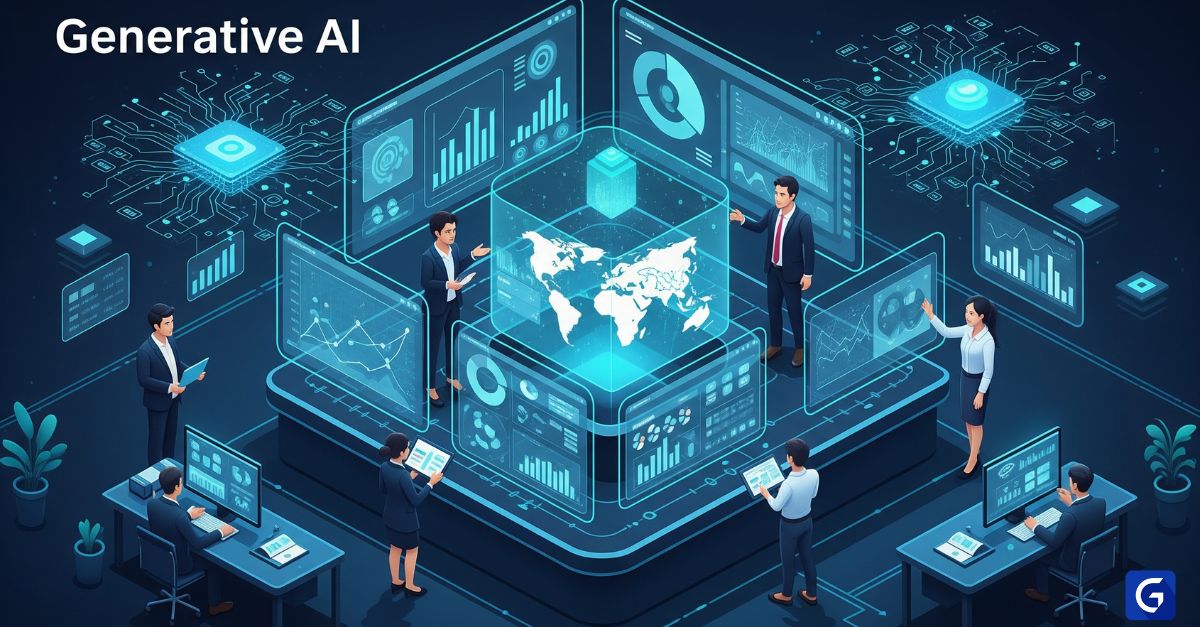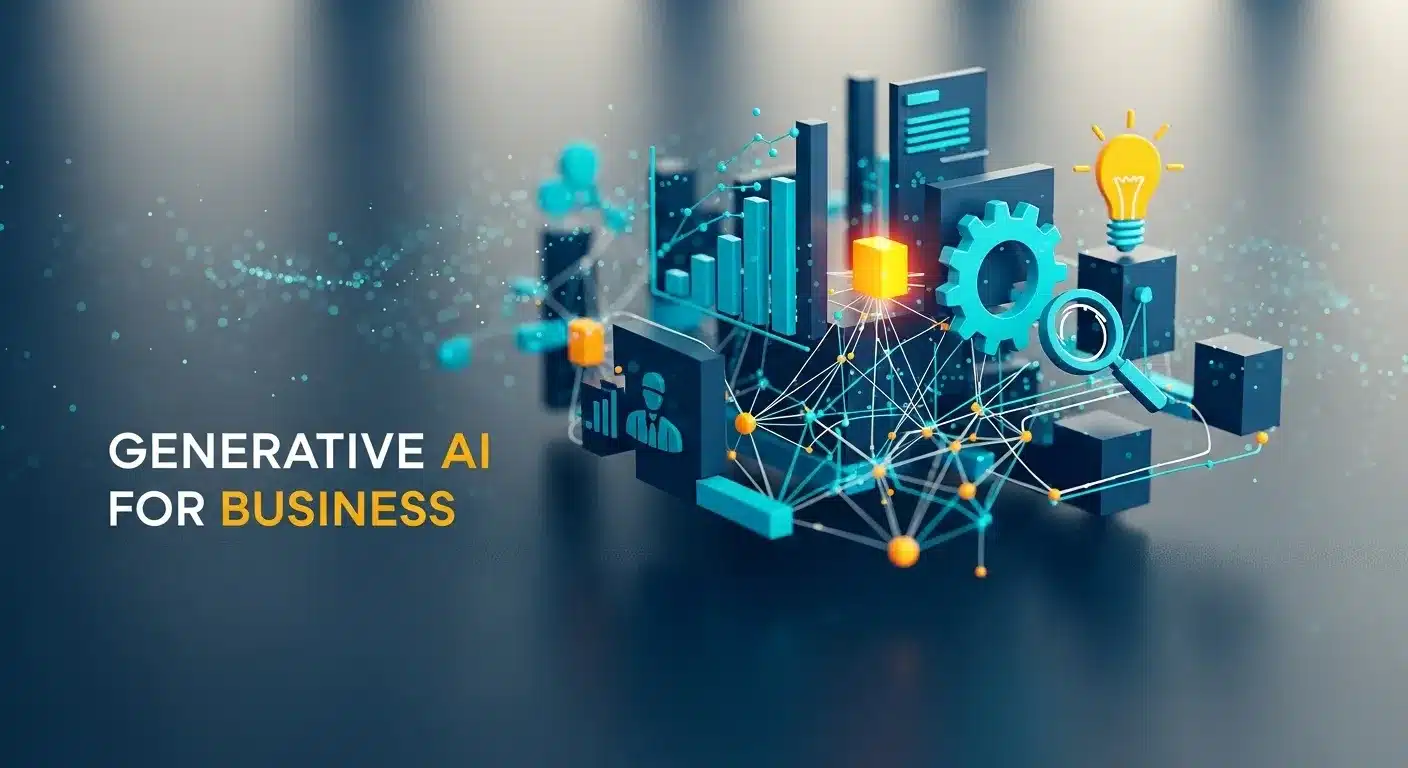As businesses tackle the ever-evolving challenges of data, the rise of generative AI is creating a significant shift in how companies utilize business intelligence & analytics.
With the global AI market expected to soar from $244 billion in 2025 to an astonishing $1 trillion by 2031, it’s evident that AI has moved beyond being just a trendy term; it’s now a vital resource for organizations aiming to stay ahead.
The power of generative AI lies in its ability to not only analyze data but also to produce insights, forecasts, & even strategies in real-time, enabling companies to make quicker, more intelligent decisions.
In this blog, we’ll explore the top 5 game-changing applications of generative AI in business intelligence & analytics, showcasing how this technology is paving the way for a future driven by data success.
Gain Practical Generative AI Skills to Drive Business Innovations
Master cutting-edge Generative AI techniques with the Post Graduate Program in Generative AI for Business Applications. Unlock business growth, automate decisions, and fuel innovation through hands-on learning and expert mentorship.
1. Synthetic Data Generation & Data Augmentation
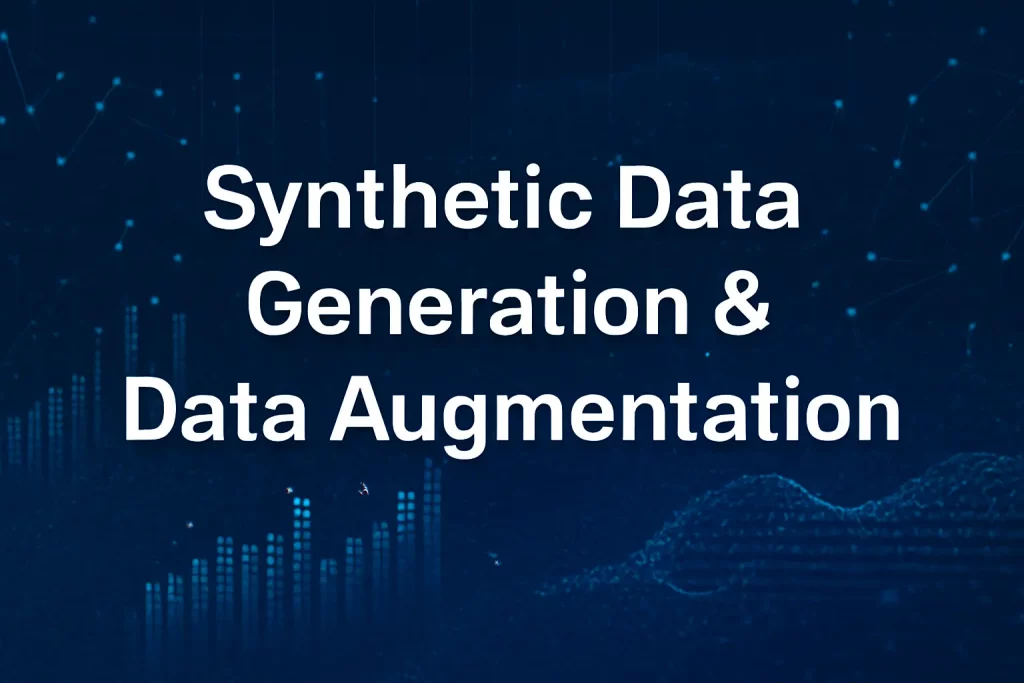
Generative AI is known to transform the generation of synthetic data & data augmentation in business intelligence & analytics. By creating synthetic data that reflects real-world datasets, businesses can overcome multiple challenges, such as incomplete, biased, or privacy-sensitive data, & ensure more reliable insights.
- Improved Model Building: Generative AI will allow variations to be created from existing data. In machine learning models, this is advantageous as it gives larger training datasets, therefore improving accuracy. It ensures that the algorithms can address the variety of realities that could happen in the real world.
- Data Privacy: Synthetic data provides companies with the benefit of real-world dataset characteristics for analytical processes without the risks of exposing any sensitive information. They can utilise the data for analysis and potential insights without putting the data subjects or proprietary information at risk because the data is not actual data.
- Cost-efficient: The synthetic data arena reduces the costs that need to be incurred for entire datasets and the costs associated with collecting and cleaning a dataset. The utilization of synthesized data shortens development cycles, and the resources can now be used for more constructive strategic pursuits.
As generative AI continues to gain traction in analytics, professionals need to understand its full potential. Courses like the Master Generative AI offer valuable insights into how businesses can apply these techniques, helping organizations stay competitive & innovative in the age of data.
2. Automated Analytics & Report Generation
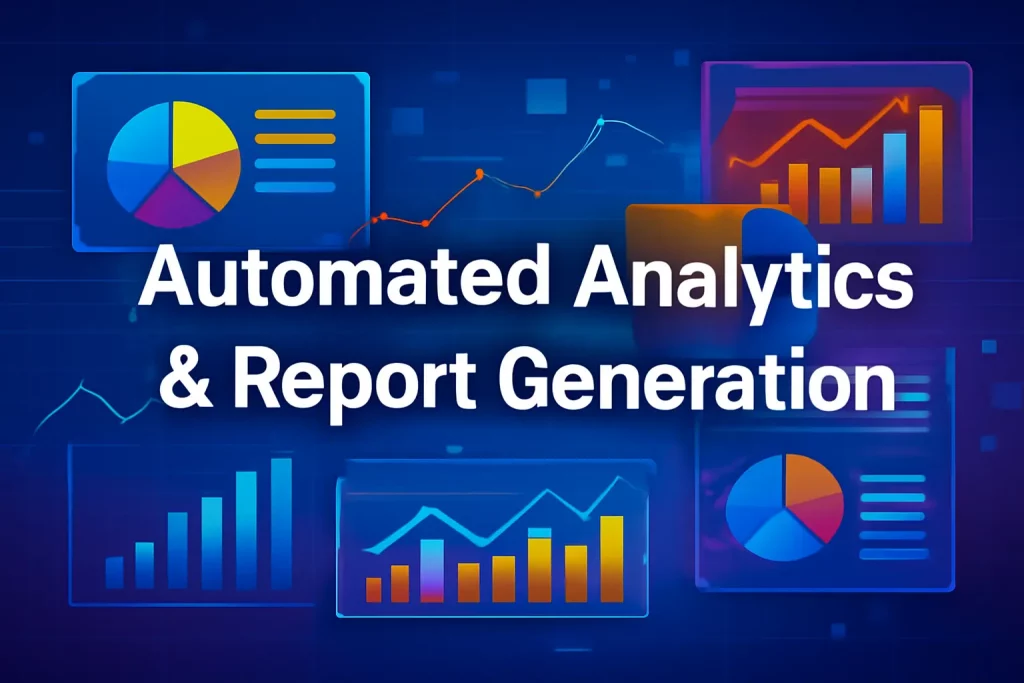
It is becoming easier for businesses to generate analytics and reports from data, and generative AI is facilitating this change to automated reports and analytics. Companies are moving to automate reporting and analytics and are not reliant on manual reporting processes, so they can generate timely and accurate reports, which allows quicker decision-making and more efficient operations. Here are a few of the many benefits:
- Increased efficiency: Generative AI can process extensive datasets, identify major trends, and create reports in a timely manner, which saves time and helps to ease the workload for respective teams.
- Customization and personalization: AI can also generate separate reports for different stakeholders with different formats, with each report focusing on the most relevant insights for the intended audience.
- Error reduction: AI enables automation of analysis and standardized reporting. This reduces the chances of human error, so reports will be more accurate and more widely understood every time.
- Scalable: When companies grow, they increase their datasets and reporting requirements. AI allows you to continue generating analytics on growing datasets without needing to hire additional humans to scale your analytics functions.
As AI becomes a core element of business strategy, understanding its practical applications is crucial. The Applied Generative AI Certificate Program at Johns Hopkins University is designed to equip professionals with the skills needed to harness the full potential of generative AI in automating analytics & reporting, empowering them to make smarter, data-driven decisions.
3 Predictive Analytics & Forecasting
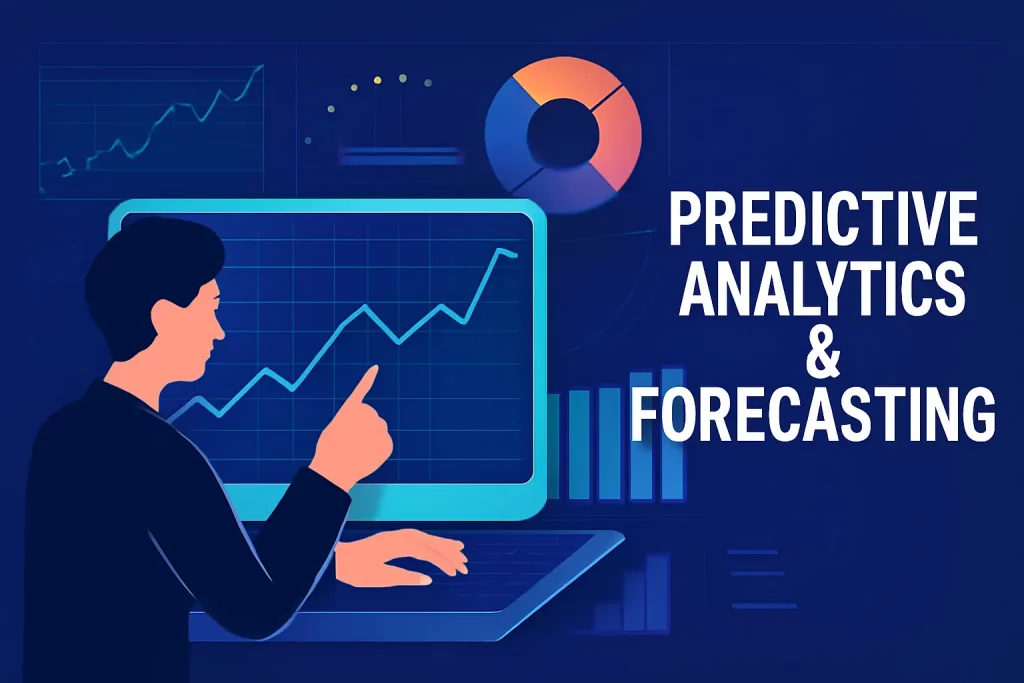
With generative artificial intelligence (AI), organizations can leverage historical data to generate accurate forecasts that gauge likely future developments (i.e, customer behavior, market fluctuations, operational requirements, etc.). These predictions provide many insights to conduct organizational activities better and faster than can be achieved by traditional means of analysis.
- Data-driven Predictions- Generative AI recognizes patterns & trends across large historical datasets, thereby allowing organizations to make informed predictions about probable future outcomes.
- Enhanced Accuracy - Generative AI delivers enhanced reliability & accuracy compared with traditional manual methods due to the ability of AI to consider & synthesize massive strains of complexity occupying vast datasets, which creates uncertainty, making manual methods less organized and predictable.
- Competitive Advantage - When organizations are empowered with predictive knowledge, they can anticipate trends, acting strategically to alter a price point or action to capitalize on their competitors.
- Risk Management - Oftentimes, AI can bring to the attention or surface opportunities & risks that arise from shifts in market conditions or customer behavior. Potential problems can be an unknown marketing campaign's effectiveness, product costs, seasonal shifts in demand, etc. Ignoring or delaying action can incur a damaging & costly decision.
For those keen to master predictive analytics, the PG Program in Data Science by Great Learning offers a deep dive into the world of AI-powered analytics & forecasting. It equips professionals with the tools to implement these cutting-edge technologies & create data-driven strategies that transform business outcomes.
4. Anomaly Detection & Fraud Prevention

Conventional fraud detection tools show limitations in recognizing patterns of fraud, which results in losses and added risk for the organization. Generative AI offers a compelling alternative due to its ability to review massive amounts of data and identify unusual behavior, pinpoint fraudulent activity, and raise potential risk factors before they escalate.
- Proactive Fraud Detection: AI can detect large amounts of transactions and data simultaneously and in real-time; once a suspicious transaction or activity is flagged, there is much faster potential for intervention.
- Advanced Pattern Recognition: Generative AI learns through recognizing patterns in historical data. It can therefore capture events and anomalies that traditional systems fail to identify, first to eliminate fraudulent activity.
- Reduced False Positives: The proxy of continuous improvement in AI modelling results in fewer false alerts and inadvertent calls to action for only real threats.
- Scalable Solutions: As organizations grow, so do their systems. AI-generated forecast capability allows the fraud detection system to maintain accuracy and speed as transactions and data volume increase.
- Enhanced Security: With predictive capacity, AI aims to identify potential threats before events occur, and reduces risk exposure through the successive implementation of improving security that identifies risks.
Learn to leverage AI for better fraud prevention with the Gen AI for Business Applications course from the University of Texas. It’s designed to help you apply AI-driven solutions that detect anomalies & safeguard your business effectively.
5. Data Visualization & Interactive Dashboards
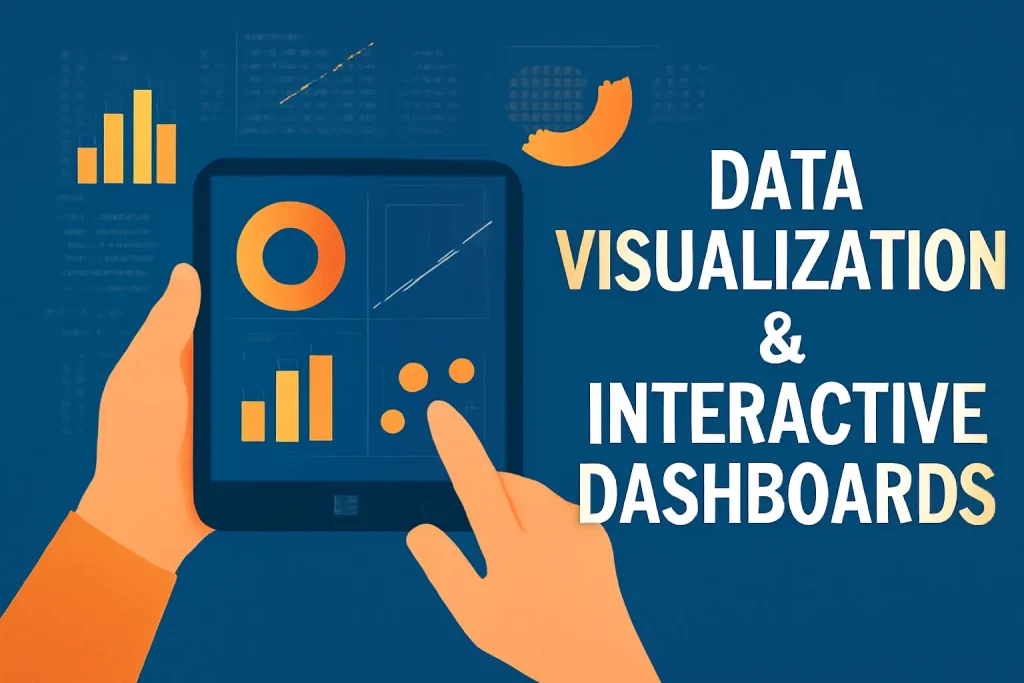
Generative AI is changing how businesses visualize data & build dashboards, making them smarter, faster, & more intuitive. Instead of manually selecting chart types or digging through spreadsheets, teams can now rely on AI to automatically generate visuals that highlight key insights & adjust in real-time based on data inputs.
- It allows for the creation of dashboards that are dynamic, which not only update automatically but also suggest the right visual formats for your data.
- Users can interact with these dashboards using natural language prompts, inquiring about things like "what was last quarter's best-performing region?" and receive an instant visual answer.
- Generative AI also personalizes analytics experience by becoming aware of user habits & iteratively shaping the way data is displayed, on a role basis, through all departments such as marketing, sales, or finance.
- All of this equates to fast & efficient decision-making, improved collaboration across departments, & faster routes to great analytics.
To explore how this technology works & how you can start using it in your business, check out the free Generative AI for Beginners course by Great Learning. It breaks down the fundamentals of generative AI. It demonstrates how it can be applied in areas such as business intelligence & analytics, making it ideal for professionals seeking to future-proof their skill set through practical, hands-on learning.
Conclusion
Generative AI is revolutionizing business intelligence by enabling companies to make smarter and quicker decisions. It improves fraud detection and reporting accuracy and automates reporting, which increases accuracy and saves time and costs. AI innovations let companies predict trends and findings, find anomalies, and identify inefficiencies in complex processes. Business intelligence powered by AI adopts a channel strategy to allow businesses to move faster, gain insights, improve operations, and stay ahead of the challenges of a dynamic market.
